In the nocturnal realm of Oklahoma, a diverse array of owls grace the skies, adding an air of mystery to the state’s landscapes.
A compilation of ten owls native to this region unveils the captivating avian residents that navigate the night.
Each species brings a unique charm to Oklahoma’s ecosystems, from the majestic Great Horned Owl to the elusive Short-eared Owl.
This exploration delves into the scientific intricacies of these remarkable birds, shedding light on their lifespans, sizes, diets, populations, and wingspans.
Join us on a journey through the moonlit woods and open plains as we unravel the tales of these enchanting creatures that silently rule the night in the heart of Oklahoma. Stay focused.
10 Owls in Oklahoma
Check out the enchanting world of owls in Oklahoma through this concise guide. Each species reveals unique traits, from the majestic Great Horned Owl to the elusive Short-eared Owl.
Discover their scientific names, lifespans, sizes, diets, populations, and wingspans. Immerse yourself in the diverse lifestyles of these captivating birds, enriching the natural tapestry of Oklahoma’s landscapes.
1. Barn Owl
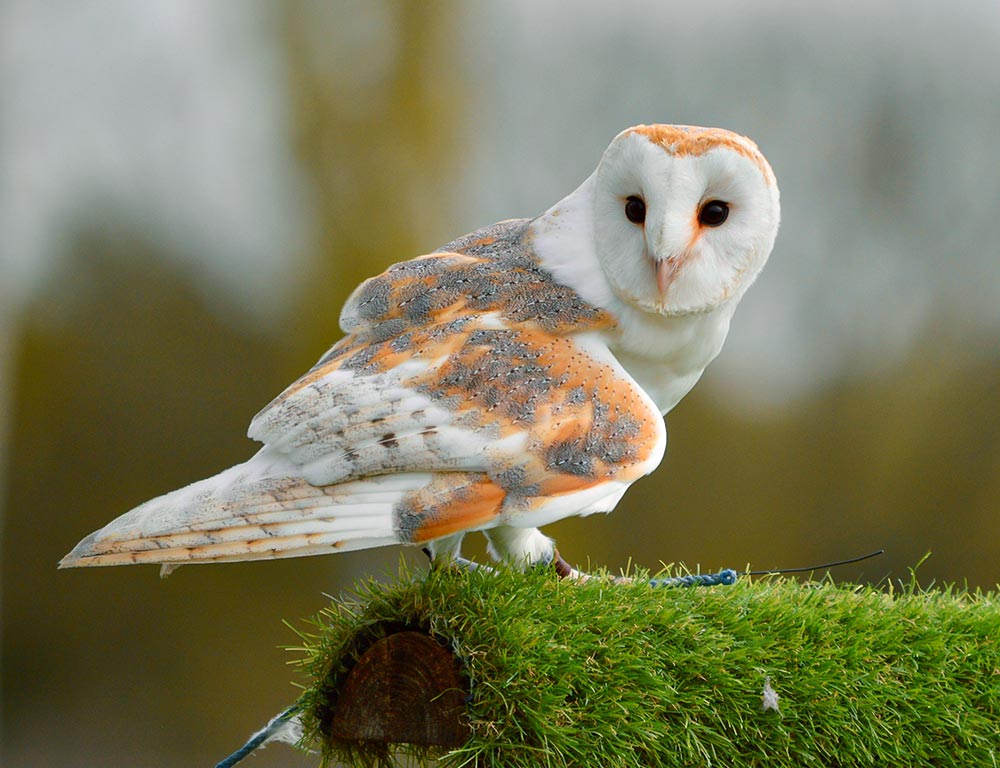
- Scientific name: Tyto alba
- Life span: 2-5 years
- Size: 12-15 inches
- Weight: 14-24 ounces
- Food: Mainly small mammals like rodents
- Population: Common in suitable habitats
- Wingspan: 38-47 inches
The Barn Owl, scientifically known as Tyto alba, is a captivating nocturnal bird found in Oklahoma. With a life span of 2-5 years, these owls boast a size of 12-15 inches and a weight ranging from 14 to 24 ounces.
They primarily prey on small mammals, such as rodents, making them valuable for natural pest control.
Commonly encountered in suitable habitats, these owls exhibit a wingspan that spans from 38 to 47 inches, aiding their silent flight and efficient hunting.
The Barn Owl’s lifestyle revolves around its exceptional nocturnal hunting abilities.
Adapted for low-light conditions, their heart-shaped facial discs aid in sound localization, enabling them to pinpoint the exact location of their prey.
With an acute sense of hearing, these owls can detect even the slightest rustle in the grass. They employ stealth and surprise, silently gliding through the night to secure their meals.
Nesting in cavities or structures, they exhibit remarkable parenting skills, tending to their young with dedication.
2. Great Horned Owl
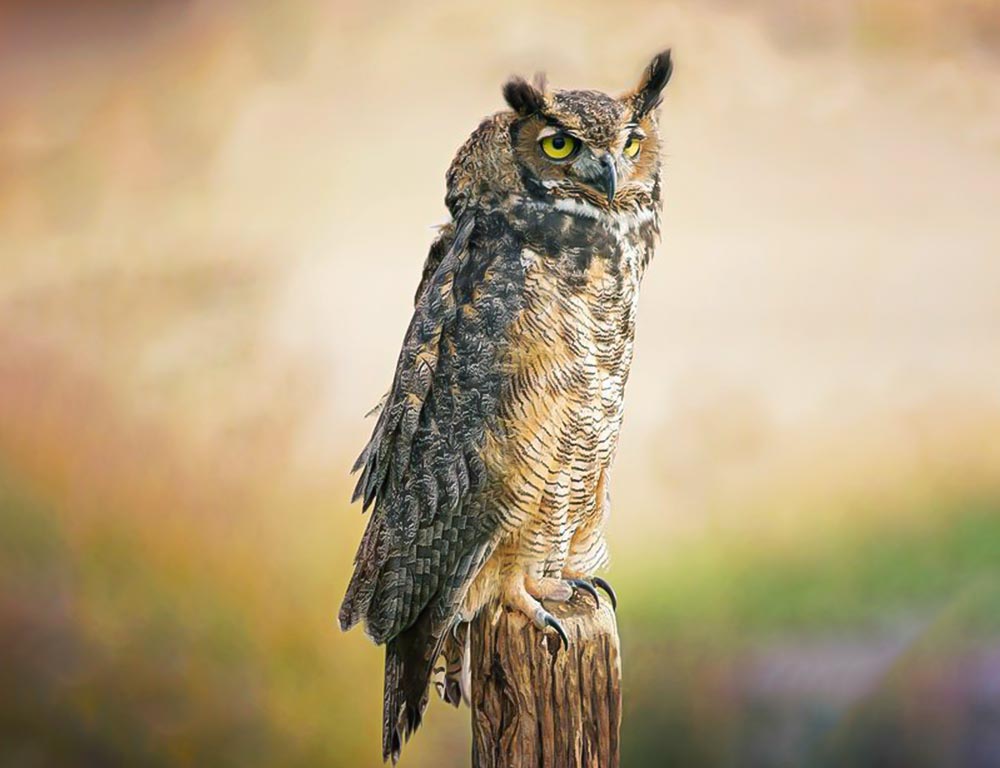
- Scientific name: Bubo virginianus
- Life span: 5-15 years
- Size: 18-25 inches
- Weight: 2-5.5 pounds
- Food: Diverse diet, including mammals and birds
- Population: Widely distributed and common
- Wingspan: 39-57 inches
The Great Horned Owl, scientifically known as Bubo virginianus, is a majestic raptor thriving in the Oklahoma region.
With a notable life span of 5-15 years, these owls exhibit a substantial size ranging from 18 to 25 inches and a weight between 2 to 5.5 pounds.
Their diverse diet includes mammals and birds, showcasing their adaptability in different ecosystems.
Widely distributed and common, the Great Horned Owl possesses an impressive wingspan ranging from 39 to 57 inches, contributing to their exceptional aerial prowess.
Great Horned Owls lead a versatile lifestyle, displaying remarkable hunting skills and adaptability.
Their powerful talons and beak enable them to capture a wide range of prey, from rabbits and squirrels to smaller birds. Displaying exceptional parenting, they often reuse abandoned nests for their own broods.
These owls are known for their distinctive hooting calls during the breeding season, establishing their territorial presence in the vast landscapes they inhabit.
3. Barred Owl
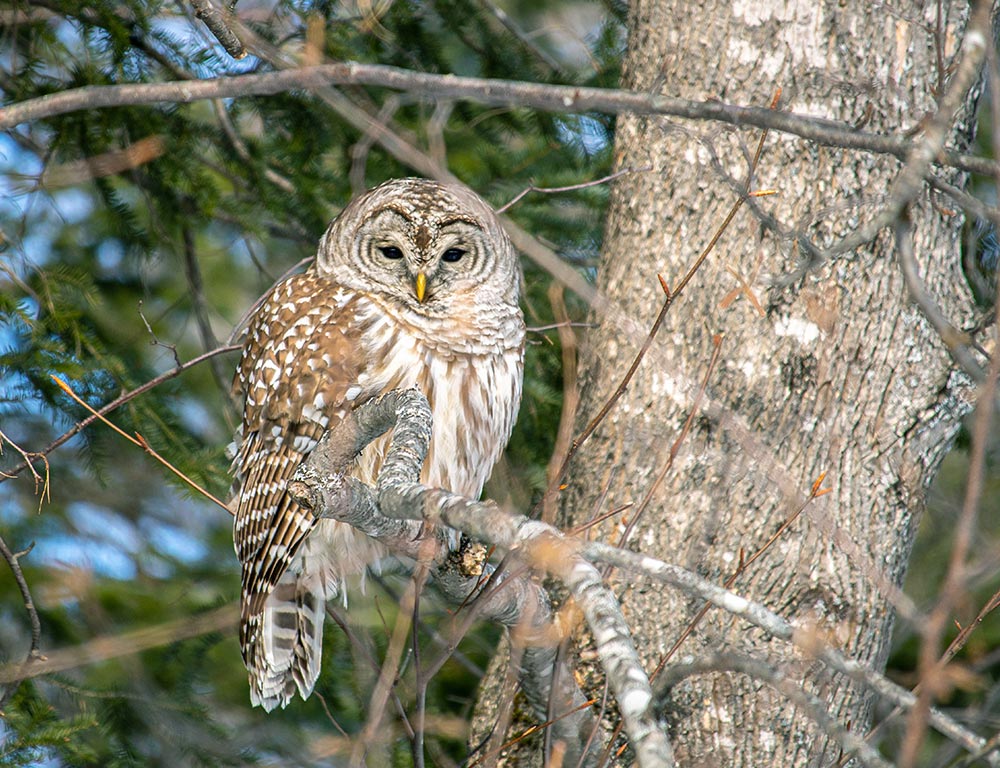
- Scientific name: Strix varia
- Life span: 10-23 years
- Size: 16-25 inches
- Weight: 1-2.6 pounds
- Food: Mainly small mammals, birds, and amphibians
- Population: Stable, adaptable to various habitats
- Wingspan: 38-49 inches
The Barred Owl, scientifically named Strix varia, graces the Oklahoma landscape with its presence.
With an impressive life span ranging from 10 to 23 years, these owls showcase a size between 16 to 25 inches and a weight ranging from 1 to 2.6 pounds.
Their diet primarily consists of small mammals, birds, and amphibians, making them versatile hunters. With a stable population and adaptability to various habitats, the Barred Owl boasts a wingspan ranging from 38 to 49 inches.
Barred Owls lead a distinctive lifestyle, often preferring wooded areas near water sources. Their hooting calls resonate through the night, establishing their territorial presence.
Renowned for their adaptability, these owls can thrive in both urban and rural environments. Their remarkable camouflage and silent flight contribute to their effectiveness as nocturnal hunters.
Barred Owls exhibit strong familial bonds and are known for their monogamous relationships. The Barred Owl is an adaptable and resilient species, contributing to the rich biodiversity of Oklahoma’s ecosystems.
4. Eastern Screech Owl
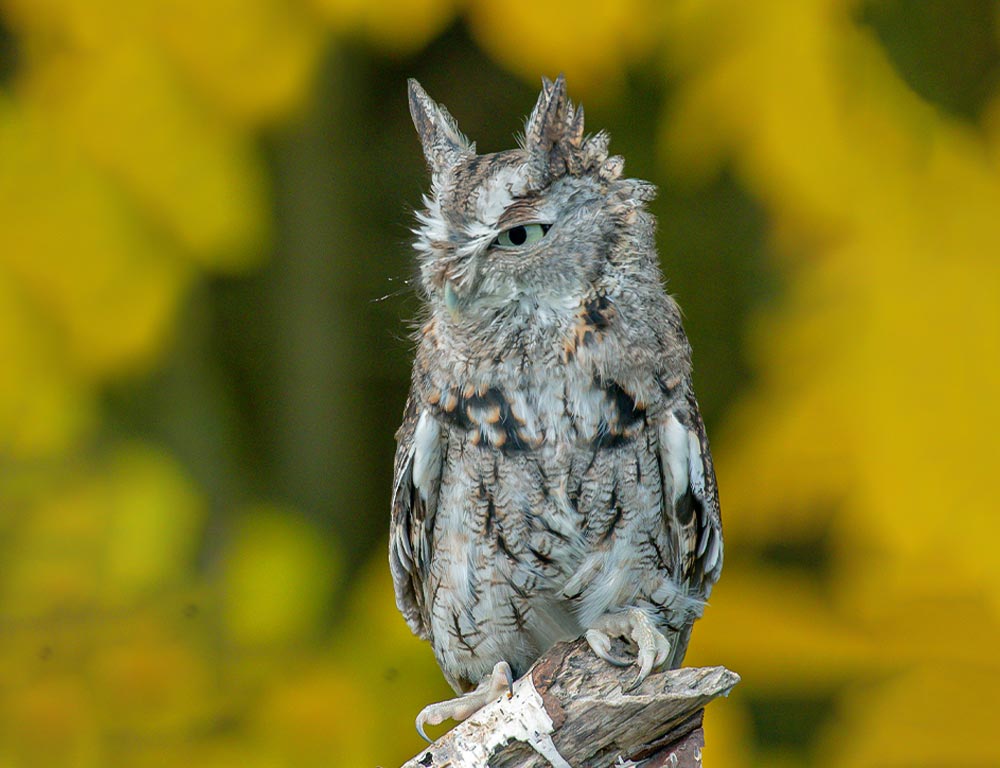
- Scientific name: Megascops asio
- Life span: 3-7 years
- Size: 6-10 inches
- Weight: 4-9 ounces
- Food: Mainly insects, small mammals, and birds
- Population: Stable, common in suitable habitats
- Wingspan: 18-24 inches
The Eastern Screech Owl, scientifically named Megascops asio, is a captivating nocturnal owl found in Oklahoma.
With a life span of 3-7 years, these owls are relatively small, ranging from 6 to 10 inches in size and weighing between 4 to 9 ounces.
Their diet primarily consists of insects, small mammals, and birds, showcasing their adaptability in diverse ecosystems.
Common in suitable habitats, the Eastern Screech Owl boasts a wingspan ranging from 18 to 24 inches.
The lifestyle of the Eastern Screech Owl revolves around its nocturnal habits. Its distinctive trill or whinnying call is often heard at night, contributing to the mysterious ambience of wooded areas.
These owls are cavity nesters, utilizing abandoned woodpecker holes or nesting boxes. Their camouflaged plumage and keen hunting skills make them effective predators in the darkness.
Despite their small size, Eastern Screech Owls play a significant role in controlling insect and rodent populations, making them valuable contributors to the ecosystem.
5. Snowy Owl
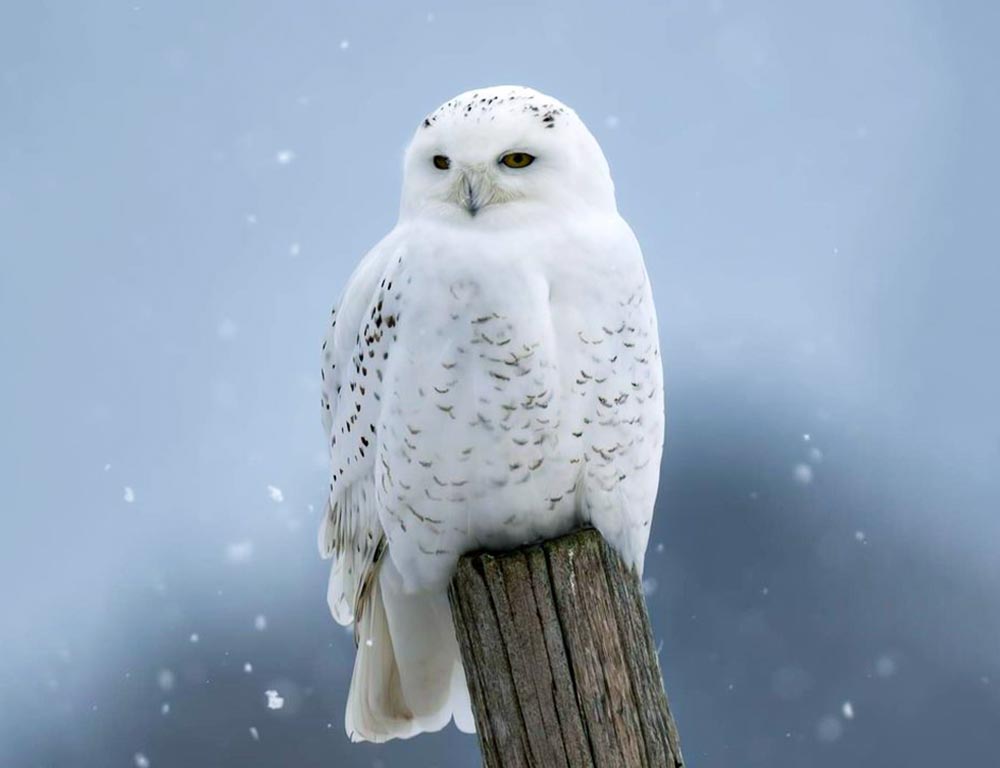
- Scientific name: Bubo scandiacus
- Life span: 10 years (in the wild)
- Size: 20-28 inches
- Weight: 3-6.6 pounds
- Food: Mainly lemmings and other small mammals
- Population: Varies with lemming cycles
- Wingspan: 49-59 inches
The Snowy Owl, scientifically known as Bubo scandiacus, is a majestic owl species that occasionally visits Oklahoma during winter migrations.
With a life span of around ten years in the wild, these owls are relatively large, ranging from 20 to 28 inches in size and weighing between 3 to 6.6 pounds.
Their primary diet consists of lemmings and other small mammals, and their population varies with the cyclic availability of lemmings. Snowy Owls exhibit an impressive wingspan ranging from 49 to 59 inches.
The lifestyle of the Snowy Owl is closely tied to the Arctic tundra, where they breed. Some individuals venture into areas like Oklahoma for suitable hunting grounds during winter migrations.
Their pristine white plumage provides effective camouflage in snowy environments. Snowy Owls are known for their patience in hunting, often perching and scanning vast landscapes for potential prey.
Their adaptability to diverse habitats during migration showcases their resilience in the face of changing environmental conditions.
6. Burrowing Owl
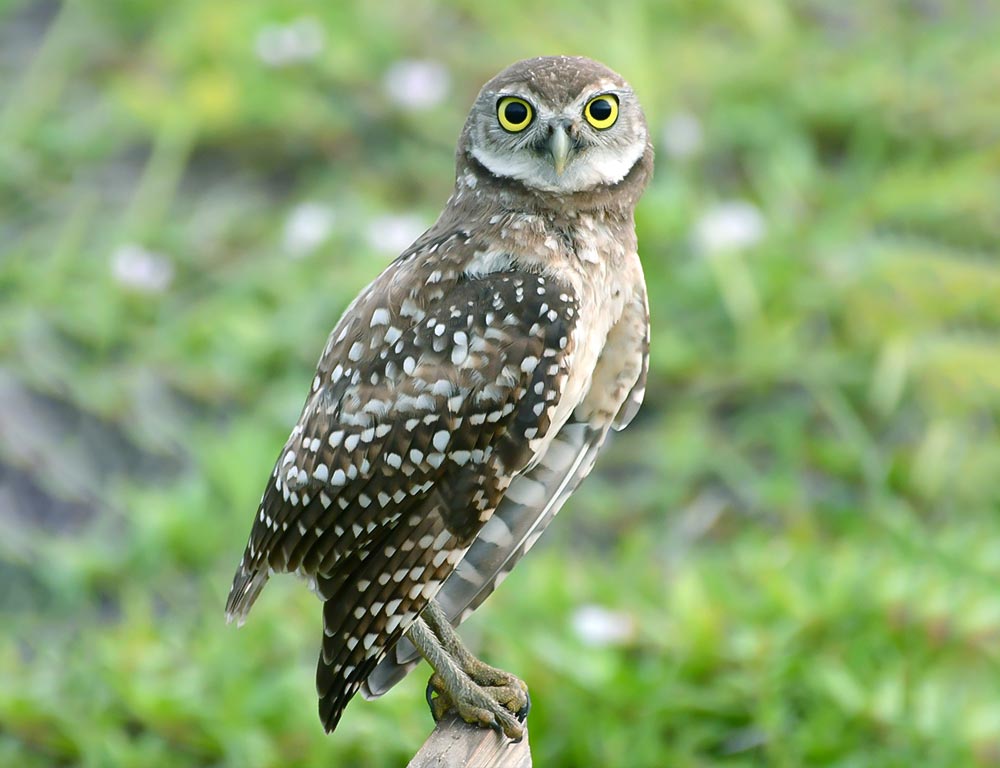
- Scientific name: Athene cunicularia
- Life span: 6-8 years
- Size: 7-10 inches
- Weight: 5-8 ounces
- Food: Mainly insects and small mammals
- Population: Declining in some areas
- Wingspan: 21-24 inches
The Burrowing Owl, scientifically named Athene cunicularia, is a unique owl species with distinctive behaviours.
With a life span of 6-8 years, these owls are relatively small, ranging from 7 to 10 inches in size and weighing between 5 to 8 ounces.
Their diet mainly consists of insects and small mammals, and they are known to reside in burrows, either dug by themselves or repurposed from other animals.
The population of Burrowing Owls is declining in some areas, making conservation efforts crucial. They exhibit a wingspan ranging from 21 to 24 inches.
Burrowing Owls lead a fascinating lifestyle, often choosing open habitats like grasslands and prairies. They are ground-dwellers, utilizing abandoned burrows of mammals like prairie dogs.
Their diurnal habits set them apart from many other owl species, as they are active both during the day and night.
Burrowing Owls are adept at capturing prey on the wing and play a vital role in controlling insect populations.
Conservation initiatives are essential to ensure the survival of these charismatic and ground-dwelling owls.
7. Western Screech Owl
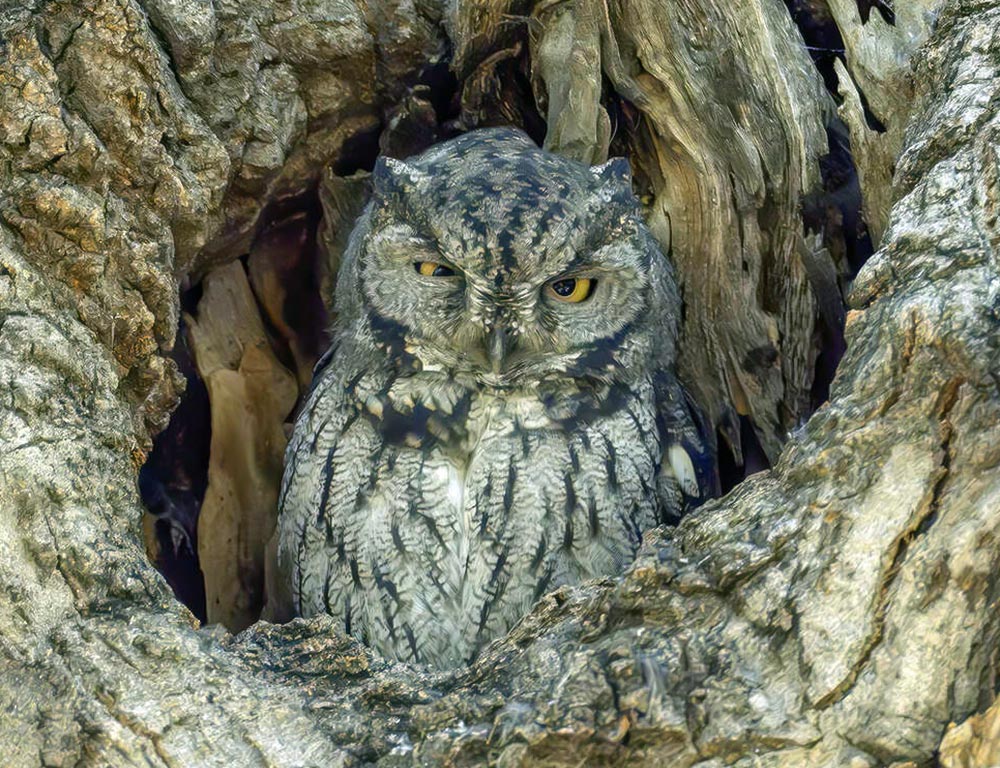
- Scientific name: Megascops kennicottii
- Life span: 3-14 years
- Size: 7-10 inches
- Weight: 4-8 ounces
- Food: Mainly insects, small mammals, and birds
- Population: Stable, common in suitable habitats
- Wingspan: 18-24 inches
The Western Screech Owl, scientifically named Megascops kennicottii, is a nocturnal bird of prey found in western North America, including Oklahoma.
With a life span of 3-14 years, these owls are relatively small, ranging from 7 to 10 inches in size and weighing between 4 to 8 ounces.
Their diet primarily consists of insects, small mammals, and birds, showcasing their adaptability in diverse ecosystems. Common in suitable habitats, the Western Screech Owl boasts a wingspan ranging from 18 to 24 inches.
Western Screech Owls lead a primarily nocturnal lifestyle, relying on their keen senses to locate prey in the darkness.
Their vocalizations, including trills and whistles, are crucial in communication and territory establishment. These owls are cavity nesters, often utilizing natural tree hollows or nest boxes.
Their cryptic plumage aids in camouflage, making them efficient hunters. Western Screech Owls are integral to healthy ecosystems and regulate insect and rodent populations.
8. Short-eared Owl
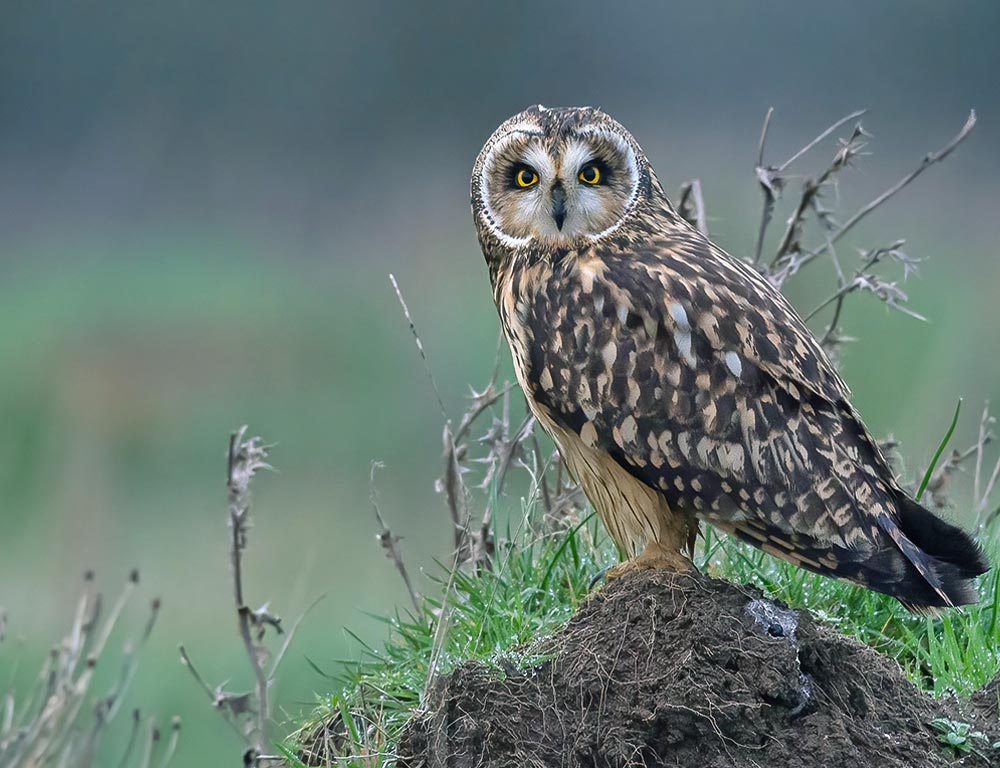
- Scientific name: Asio flammeus
- Life span: 3-5 years
- Size: 13-17 inches
- Weight: 7-16 ounces
- Food: Mainly rodents, small mammals, and birds
- Population: Varies with prey availability
- Wingspan: 33-43 inches
The Short-eared Owl, scientifically known as Asio flammeus, is a diurnal or crepuscular owl species.
With a life span of 3-5 years, these owls have a medium size, ranging from 13 to 17 inches, and a weight between 7 to 16 ounces.
Their diet primarily consists of rodents, small mammals, and birds, and their population varies with prey availability. Short-eared Owls exhibit a wingspan ranging from 33 to 43 inches, contributing to their graceful flight patterns.
These owls are often found in open habitats like grasslands, marshes, and fields, where they hunt by gliding low over the vegetation to spot prey.
9. Long-eared Owl
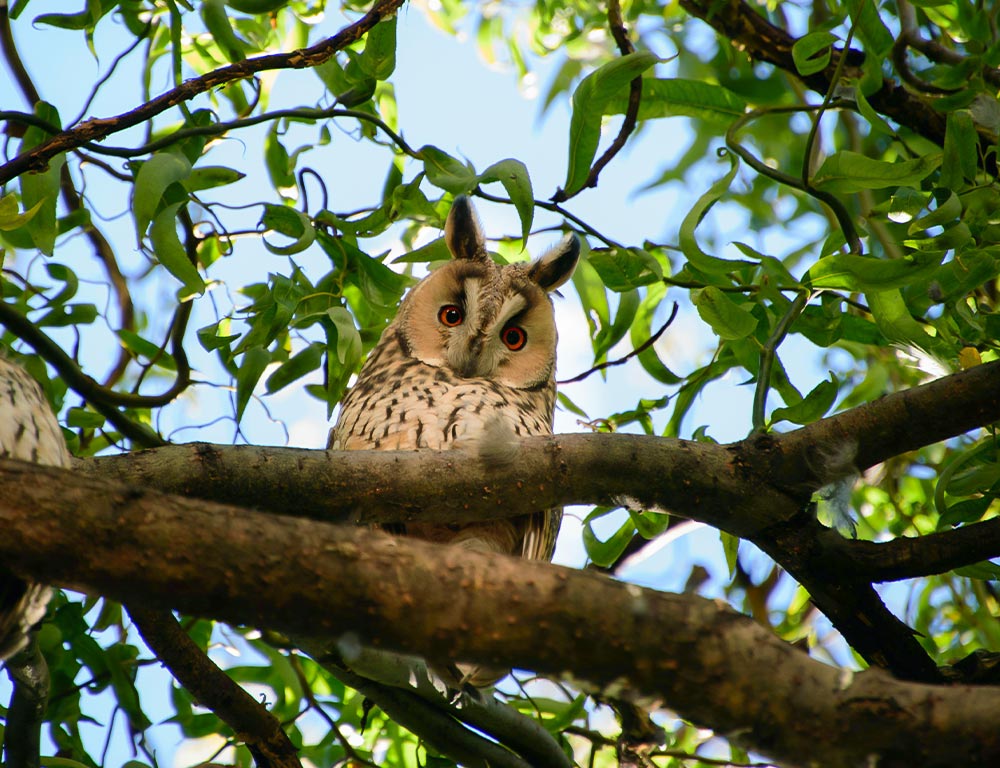
- Scientific name: Asio otus
- Life span: 4-8 years
- Size: 13-16 inches
- Weight: 7-16 ounces
- Food: Mainly small mammals, birds, and insects
- Population: Stable, common in suitable habitats
- Wingspan: 35-39 inches
The Long-eared Owl, scientifically known as Asio otus, is a nocturnal owl species found in various habitats.
With a life span of 4-8 years, these owls have a medium size, ranging from 13 to 16 inches, and a weight between 7 to 16 ounces.
Their diet mainly consists of small mammals, birds, and insects, and they are common in suitable habitats, displaying a stable population. Long-eared Owls exhibit a wingspan ranging from 35 to 39 inches.
These owls are known for their long ear tufts, which are actually feathers and are often found roosting in dense vegetation during the day.
10. Northern Saw-whet Owl
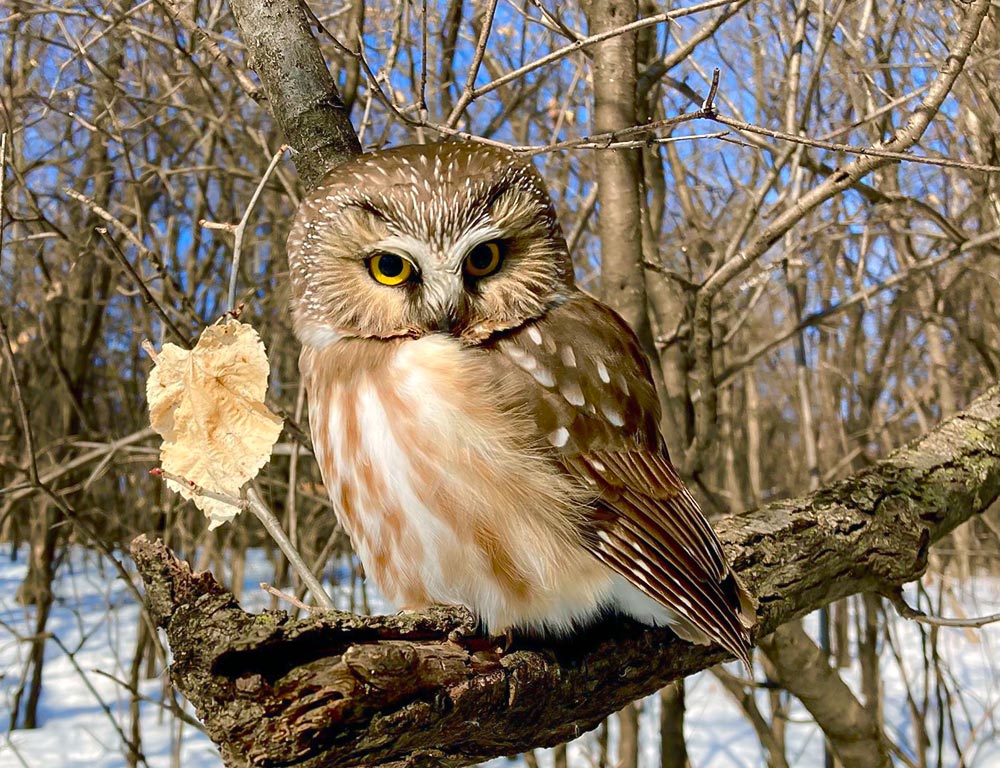
- Scientific name: Aegolius acadicus
- Life span: 7-8 years
- Size: 7-8 inches
- Weight: 2-5 ounces
- Food: Mainly small mammals and birds
- Population: Stable, widespread in suitable habitats
- Wingspan: 16-18 inches
The Northern Saw-whet Owl, scientifically named Aegolius acadicus, is a small, secretive, nocturnal owl. With a life span of 7-8 years, these owls are petite, measuring 7-8 inches in size and weighing between 2 to 5 ounces.
Their diet mainly consists of small mammals and birds, and they have a stable and widespread population in suitable habitats. Northern Saw-whet Owls exhibit a wingspan ranging from 16 to 18 inches.
These owls are known for their distinctive “tooting” calls during the breeding season, and they often roost in dense vegetation or tree branches during the day.
Wrapping Up
In the quiet realms of Oklahoma, owls cast their mysterious spells, embodying nature’s resilience. These winged wonders play crucial roles, from the silent hunters to the twilight explorers.
Uncover their diverse lifestyles, understand their ecological significance, and embrace the enchantment these nocturnal guardians bring to the rich landscapes of Oklahoma. Thank you so much.